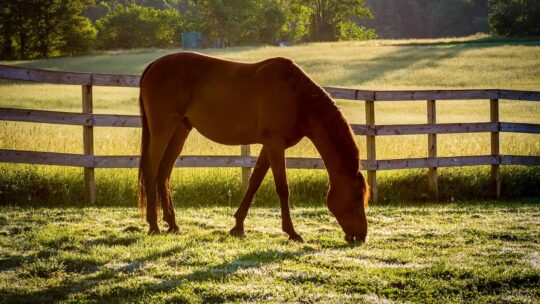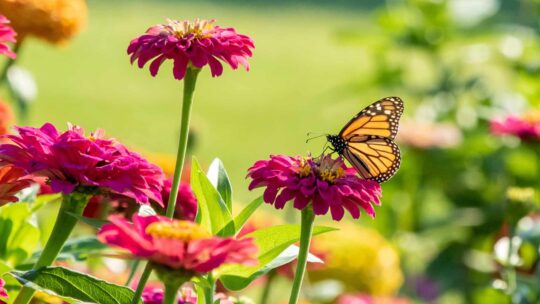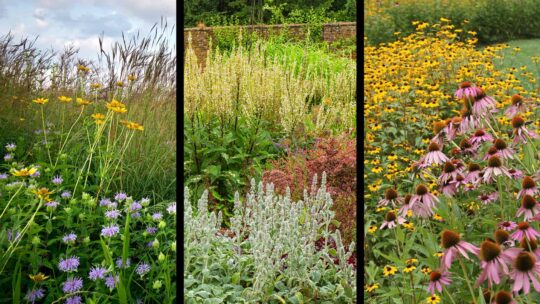Rotational grazing is the process of sectioning land and rotating livestock, allowing them to graze fresh pastures and providing grazed pastures some rest. Through rotational grazing, grazing time and intensity are managed, allowing pastures to rest and recover. And, this helps in maintaining healthy stands of vegetation through recuperation of carbohydrate stores, while also improving yield and nutrition.
Rotational grazing is a prime strategy in preventing overgrazing, improving pasture and herd health, improving forage productivity and nutritional value, and benefitting the environment. As opposed to continual grazing, this process has numerous benefits to both your animals and you, as farm managers.
Continual and Intensive Grazing
In general, two to four acres per horse are required for sustainable continual grazing. Overgrazing occurs when animals are allowed to graze over-short grasses. This can permanently injure the grass stand and require annual reseeding. However, when paired with increased oversight and management accompanying a rotational grazing system, this acreage requirement can be significantly decreased.
Likewise, intensive grazing pressure has a big impact on your pastures, too. It limits soil fertility, creates compaction, and stresses vegetation, allowing weed pressure. This is why rotational grazing with routine mowing becomes even more important with intensive grazing systems. Especially when the animal stocking rates exceed grazable acres.
Sacrifice Lots
The use of a sacrifice lot, also known as an “animal concentration area” or “heavy use area” (think: grit paddock), is helpful in a rotational grazing system. This allows you to move animals when conditions are not yet suitable for grazing (i.e. extremely wet, hot, or dry conditions). Or, when pasture grass growth slows and is not yet ready.
Rotational Grazing Rules of Thumb
Make sure to begin grazing pasture number 1 when the grass is six to eight inches tall. And, let your animals graze it down to three to four inches (or about 50% of the forage). To avoid grass damage, never let your animals graze it shorter than three inches. To ensure your pastures are never grazed too low, move your animals to pasture number 2 and give pasture 1 time to regrow.
Mowing as a Management Tool
If grazing alone cannot maintain pastures at the proper height, mowing becomes a key tool. It helps keep grass in its vegetative stage, while promoting weed suppression and additional growth. Taller grasses might be less palatable to livestock as well, as they contain less nutritional value.
The process of mowing diverts the plant’s energy from its stem and seedhead. Effectively channeling reproductive growth back into vegetative. This also works to promote root grow and a denser forage stand. If no pasture has sufficiently recovered by the time the horses have rotated through all available pastures, then the sacrifice lot should be used. However, make sure to employ it for supplemental feeding only, until a pasture is suitable for grazing.
However, not all grass species are considered equal. Standard cool-season grasses (such as Kentucky bluegrass, tall fescue, and white clover, as a legume) are the primary species that can tolerate heavy pressure in continuously grazed pastures. Through rotational grazing, other grass and legume species (such as orchardgrass, red clover, and alfalfa) have better grazing opportunities. This also leads to another benefit of rotational pastures: increased diversity in grass species to handle grazing pressure.
Weed and Health Management
Rotational grazing reduces weeds by maintaining a healthy stand of desirable pasture grass. Weeds take over when pastures are overgrazed and stressed. And, stressed grasses and bare areas yield real estate for weed growth. Rotational grazing also reduces mud, which benefits hoof (and overall equine) health, while reducing flies and maintenance needs.
Benefits
While management-intensive, this process reduces overall maintenance time and cost. When properly managed, pastures will not require annual reseeding and demand less chemical weed control. Cost savings are also found in reduced supplemental feeding, as properly managed pastures yield high nutrient value.
Likewise, rotational grazing benefits the environment. Dense vegetation holds soil in place, reducing erosion, compaction, and nutrient and sediment runoff—a form of pollution. Grass serves as a great filter to catch and utilize nutrients from manure. When allowed to run off, manure contains nitrogen and phosphorus, which are detrimental to waterways.
Disadvantages
A disadvantage to rotational grazing is the need for more fencing to section the pastures. And, you’ll need better water access in each section, as well as more oversight and management.
However, the benefits of rotational grazing far outweigh the disadvantages. Working to reduce overall maintenance while improving horse health.



